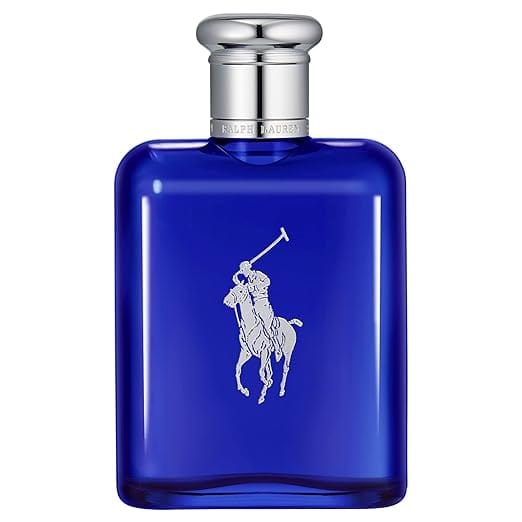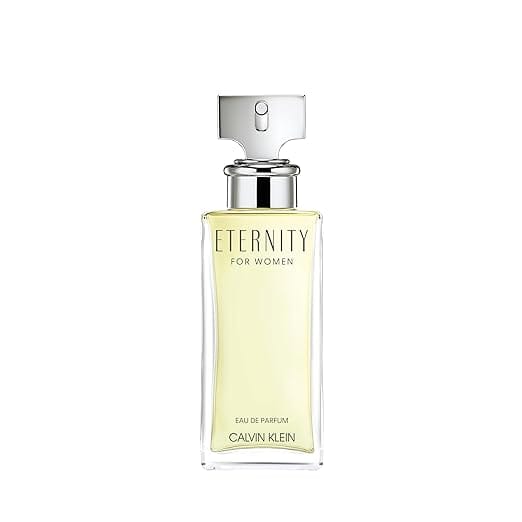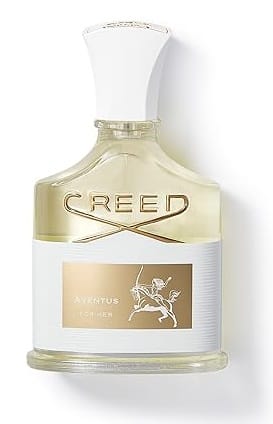Fragrance, a captivating blend of science and artistry, has enchanted humans for millennia. This intangible yet profoundly evocative element is an integral part of cultures worldwide, transcending mere functionality to evoke memories, emotions, and desires. From ancient rituals to modern luxury, fragrance occupies a unique place in the human experience, intertwining with personal identity, tradition, and innovation. This exploration delves into the history, chemistry, psychology, and cultural significance of fragrance, painting a vivid picture of its multifaceted allure.
Buy from Amazon > Ralph Lauren – Polo Blue – Eau de Toilette – Men’s Cologne – Aquatic & Fresh – With Citrus, Sage, and Suede – Medium Intensity

The Origins of Fragrance
The use of fragrance dates back thousands of years. Ancient civilizations, including the Egyptians, Mesopotamians, and Indus Valley peoples, utilized aromatic substances for religious ceremonies, personal adornment, and even medicinal purposes. The word “perfume” itself originates from the Latin “per fumum,” meaning “through smoke,” referencing the practice of burning incense and resins to honor deities or purify the air.
Buy from Amazon > Calvin Klein Eternity Eau de Parfum – Floral Women’s Perfume – With Notes of Bergamot, White Lily, White Rose, Sandalwood & Amber – Luxury Perfumes for Women – Long Lasting Fragrance

In Egypt, perfumes were considered divine, often associated with gods and used in mummification rituals. Frankincense, myrrh, and other exotic ingredients were highly prized, symbolizing wealth and spiritual devotion. Similarly, ancient Mesopotamians created the first known distillation processes to extract essential oils from plants. The Greeks and Romans further refined perfumery, incorporating floral and herbal notes and celebrating the art of scent in literature and daily life.
Buy from Amazon > Elizabeth Arden Red Door Eau de Toilette Women’s Perfume Spray, Red Door Perfume for Women, Floral Scented with Notes of Freesia, Red Roses, and Orchids, Sensual Fragrance, 3.3 oz Bottle

The medieval Islamic world advanced the science of perfumery significantly. Scholars like Avicenna pioneered techniques such as steam distillation, which allowed for the extraction of pure essential oils. This innovation laid the groundwork for modern perfumery and expanded the range of scents available, blending science and creativity.
Buy from Amazon > Creed Aventus For Her – Women’s Luxury Perfume – Woody Fresh, Crisp, Fruity & Floral Fragrance

The Chemistry of Fragrance
At its core, fragrance is a chemical composition. Perfumes are crafted from a combination of natural and synthetic aromatic compounds dissolved in alcohol or oil. The creation of a Perfume involves selecting and blending top, middle, and base notes to create a harmonious olfactory experience.
- Top Notes: These are the initial scents perceived when the perfume is applied. They are light, fresh, and often fleeting, lasting only a few minutes to an hour. Common top notes include citrus, green, and herbal scents.
- Middle Notes: Also known as the “heart” of the fragrance, these emerge as the top notes fade. They provide body and complexity, often featuring floral, spicy, or fruity elements.
- Base Notes: These are the foundation of the fragrance, providing depth and longevity. They develop slowly and linger for hours, featuring warm, woody, or musky aromas.
The art of perfumery involves balancing these layers to create a scent that unfolds beautifully over time. Advances in synthetic chemistry have expanded the palette available to perfumers, allowing for the creation of unique and innovative fragrances that may not be achievable with natural ingredients alone.
The Psychology of Fragrance
Perfume holds a profound connection to the human psyche. The sense of smell is closely linked to the limbic system, the brain’s center for emotions and memory. This intimate relationship explains why a particular scent can evoke vivid recollections or stir deep feelings.
- Memory and Nostalgia: Scents often trigger memories more powerfully than other sensory inputs. For instance, the aroma of baking cookies may transport someone back to their grandmother’s kitchen.
- Mood and Emotion: Perfumes can influence mood and emotional states. Lavender, for example, is known for its calming properties, while citrus scents can invigorate and uplift.
- Personal Identity: A signature scent can become a defining aspect of one’s identity, creating a lasting impression and enhancing self-confidence.
Perfume also plays a role in attraction. Pheromones, naturally occurring chemical signals, are thought to influence interpersonal chemistry, though their role in human behavior remains a topic of scientific debate. Nevertheless, the allure of scent in romantic and social contexts is undeniable.
Cultural Significance of Fragrance
Perfume has always been a cultural artifact, reflecting societal values, aesthetics, and technological advancements. Across different eras and regions, perfumes have symbolized power, status, and individuality.
- Rituals and Religion: In many cultures, fragrance is integral to religious practices. Incense, for instance, is used in Hindu temples, Catholic masses, and Buddhist ceremonies to create an atmosphere of reverence and focus.
- Social Hierarchy: Historically, the ability to afford and wear perfume often indicated wealth and social standing. During the Renaissance and Baroque periods, elaborate Perfumes masked unpleasant odors and demonstrated refinement.
- Modern Trends: Today, Perfume is a democratized luxury, accessible to people of various economic backgrounds. Brands market perfumes as tools for self-expression, tailoring scents to suit different personalities and lifestyles.
The Industry of Perfume
The global fragrance industry is a thriving market, blending art and commerce. Luxury brands like Chanel, Dior, and Guerlain have become synonymous with iconic perfumes that define eras. Meanwhile, niche and indie perfumers challenge conventions, crafting unique, story-driven scents.
Sustainability has become a growing concern in the industry. Consumers increasingly demand transparency about sourcing and production processes, leading to innovations in eco-friendly packaging and responsibly sourced ingredients. Synthetic biology also offers promising solutions, enabling the creation of sustainable alternatives to rare natural materials such as sandalwood and ambergris.
Creating a Personal Connection with Perfume
Choosing a Perfume is an intimate process, as it reflects personal tastes and often conveys an unspoken message. Many people build a “wardrobe” of scents, selecting different perfumes for various occasions, seasons, and moods. Some prefer light, airy florals for daytime, while others opt for rich, seductive orientals for evening wear.
Layering, or combining multiple Perfumes, allows for even greater customization. This practice enables individuals to create a truly unique scent that evolves with their personal chemistry.
The Future of Perfume
As technology advances, the future of fragrance holds exciting possibilities. Innovations such as AI-assisted perfumery and virtual reality experiences promise to transform how we create and experience scents. Scientists are exploring the potential of digital olfaction, where scents can be transmitted and experienced virtually, opening new frontiers for fragrance in entertainment, communication, and therapy.
In conclusion, Perfume is much more than a pleasant aroma. It is a bridge between the tangible and intangible, blending science, art, and emotion. Its ability to evoke memories, shape identities, and connect cultures ensures that Perfume will remain a cherished aspect of human life for generations to come. Whether through a single drop of perfume or the subtle aroma of nature, the power of scent continues to inspire and enchant.
The world of Perfumes is a captivating tapestry of art, culture, and chemistry, where the finest scents transport us to far-off places, evoke cherished memories, and express our innermost selves. Among the countless perfumes that grace our shelves, a select few stand out as the epitome of olfactory excellence. This exploration delves into the elements that make a Perfume the “best in the world,” highlighting iconic perfumes, the craftsmanship behind their creation, and the sensory journey they offer.
The Art of Perfumery: A Timeless Craft
Perfumery has a rich history that spans centuries, intertwining with the cultural fabric of societies worldwide. Ancient civilizations like Egypt, Mesopotamia, and India revered fragrances for their spiritual and ceremonial significance. Over time, perfumery evolved into a sophisticated art form, with France emerging as the global hub of fine Perfumes during the Renaissance. Today, the best perfumes represent a harmonious blend of tradition and innovation, crafted by master perfumers known as “noses.”
The “best” Perfumes are those that achieve a perfect balance of complexity, longevity, and emotional resonance. They use the finest natural and synthetic ingredients, often sourced from around the world. Jasmine from Grasse, oud from the Middle East, sandalwood from Mysore, and bergamot from Calabria are just a few examples of the premium ingredients that contribute to these masterpieces.
Iconic Fragrances: Timeless Elegance
Some fragrances have transcended time and trends, becoming benchmarks of excellence. These iconic scents are celebrated for their unique compositions and enduring appeal.
Chanel No. 5
Arguably the most famous fragrance in the world, Chanel No. 5 was created in 1921 by Ernest Beaux for Gabrielle “Coco” Chanel. Its groundbreaking composition combined aldehydes with floral notes of jasmine, rose, and ylang-ylang, resulting in a clean, modern scent that was revolutionary for its time. Chanel No. 5 remains a symbol of sophistication and elegance, adored by generations of women.
Dior Sauvage
Dior Sauvage has redefined masculine fragrances since its launch in 2015. Crafted by François Demachy, it features fresh and spicy notes of bergamot, Sichuan pepper, and Ambroxan. Its rugged yet refined character has made it a favorite among men worldwide, capturing the essence of freedom and adventure.
Creed Aventus
Aventus by Creed is often hailed as the “king of fragrances” for its luxurious and versatile scent profile. Introduced in 2010, it combines fruity notes of pineapple and blackcurrant with a smoky base of birch and oakmoss. Aventus embodies power, success, and confidence, making it a staple in the collections of fragrance aficionados.
Guerlain Shalimar
Guerlain’s Shalimar, created in 1925 by Jacques Guerlain, is a timeless oriental fragrance inspired by the love story of Emperor Shah Jahan and Mumtaz Mahal. With its sensual blend of vanilla, iris, and bergamot, Shalimar is a celebration of passion and romance. It remains an enduring symbol of sophistication and allure.
The Ingredients: Nature’s Essence and Synthetic Innovation
The best fragrances owe their excellence to the meticulous selection of ingredients. High-quality natural extracts and cutting-edge synthetic molecules work in harmony to create scents that are both unique and enduring.
Natural Ingredients
Natural ingredients are the soul of perfumery. Jasmine, often referred to as the “queen of flowers,” lends its intoxicating floral aroma to many iconic fragrances. Rose, another cornerstone of perfumery, is prized for its rich, multifaceted scent. Precious woods like sandalwood and cedarwood provide depth and warmth, while spices like cardamom and cinnamon add intrigue.
Synthetic Molecules
Synthetic ingredients have revolutionized perfumery, enabling perfumers to create scents that are impossible to achieve with natural materials alone. Iso E Super, Ambroxan, and aldehydes are examples of synthetic molecules that have become indispensable in modern fragrances. They enhance longevity, projection, and complexity, ensuring that the fragrance leaves a lasting impression.
The Craftsmanship: From Concept to Creation
Crafting a world-class fragrance is a meticulous process that involves creativity, expertise, and an intimate understanding of scent. The journey begins with a concept or inspiration, often rooted in art, nature, or personal experiences. Master perfumers then translate this vision into a composition, carefully balancing top, middle, and base notes to create a harmonious and evolving scent.
Top Notes
The top notes are the first impression of a fragrance, often characterized by fresh and bright aromas like citrus, herbs, or light florals. They are designed to capture attention and set the tone for the olfactory journey.
Middle Notes
Also known as the heart of the fragrance, middle notes emerge as the top notes fade. These are typically richer and more complex, featuring floral, spicy, or fruity accords that define the character of the scent.
Base Notes
The base notes are the foundation of the fragrance, providing depth and longevity. Common base notes include woods, amber, musk, and vanilla. They linger on the skin, creating a lasting impression.
The Sensory Experience: Emotion and Memory
Fragrances have a profound ability to evoke emotions and memories. The sense of smell is closely linked to the brain’s limbic system, which governs emotions and memory. This is why a particular scent can transport us back to a specific moment in time or evoke a strong emotional response.
The best fragrances are those that resonate on a personal level, connecting with the wearer’s identity and experiences. They become a part of one’s story, a signature scent that leaves an indelible mark on the world.
Emerging Trends in Perfumery
The world of perfumery is constantly evolving, with new trends shaping the industry. Sustainability, niche fragrances, and personalization are among the key trends influencing the creation of modern masterpieces.
Sustainability
As consumers become more environmentally conscious, sustainable practices in perfumery are gaining importance. Ethical sourcing of natural ingredients, eco-friendly packaging, and cruelty-free testing are becoming standard practices for many brands.
Niche Fragrances
Niche perfumery has emerged as a counterpoint to mass-market fragrances, offering unique and artistic creations. Brands like Byredo, Le Labo, and Maison Francis Kurkdjian are celebrated for their unconventional compositions and artisanal approach.
Personalization
Personalized fragrances, where scents are tailored to an individual’s preferences and personality, are becoming increasingly popular. This trend allows wearers to create a truly unique olfactory signature.
Conclusion: The Best Fragrance in the World
Determining the “best” fragrance in the world is ultimately a subjective endeavor, as it depends on personal taste, cultural influences, and emotional connections. However, the finest fragrances share common qualities: exceptional craftsmanship, high-quality ingredients, and the ability to evoke profound emotions.
Whether it’s the timeless elegance of Chanel No. 5, the bold sophistication of Dior Sauvage, or the luxurious allure of Creed Aventus, the best fragrances transcend mere scents. They are works of art, encapsulating beauty, emotion, and the essence of humanity in a single bottle. The search for the best fragrance is a journey through a world of olfactory wonders, where each scent tells a story and leaves an unforgettable impression.
5 Essential Tips for Using Fragrance Effectively
Fragrances are a powerful tool for self-expression and can enhance your confidence and presence. However, using them effectively requires a bit of know-how to ensure you get the most out of your favorite scent. Here are five essential tips for making the most of your fragrances.
1. Apply Fragrance to Pulse Points
Pulse points are areas of the body where blood vessels are closest to the skin, producing more heat. This heat helps diffuse the fragrance throughout the day. Common pulse points include the wrists, behind the ears, the base of the throat, and the inner elbows. Applying fragrance to these areas ensures that the scent lingers longer and projects more effectively. Remember to dab the perfume gently rather than rubbing it, as rubbing can break down the fragrance molecules, altering the scent.
2. Layer Your Fragrance
Layering is a technique that involves using multiple products with the same or complementary scents to enhance the longevity and depth of the fragrance. Start with a scented body wash, follow up with a matching lotion or cream, and finish with the perfume or cologne. This process creates a cohesive scent profile that lasts longer than applying perfume alone. Layering also helps balance the intensity of the fragrance, allowing it to evolve beautifully over time.
3. Know the Right Amount to Apply
The key to wearing fragrance is moderation. Overapplying can overwhelm those around you and diminish the elegance of the scent. A general rule is to start with one or two sprays on your pulse points and adjust based on the fragrance’s intensity. Stronger perfumes, like Parfum or Eau de Parfum, require less, while lighter ones, such as Eau de Toilette or Eau de Cologne, may need an extra spritz. Remember, your fragrance should be discovered, not announced.
4. Store Your Fragrance Properly
Proper storage is essential to maintaining the quality and longevity of your fragrance. Perfumes are sensitive to light, heat, and humidity, which can cause the scent to deteriorate or change over time. Store your fragrances in a cool, dry place, away from direct sunlight and temperature fluctuations. Ideally, keep them in their original box or a dark cabinet. Avoid keeping them in the bathroom, where steam and humidity can compromise the scent’s integrity.
5. Match Your Fragrance to the Occasion
Different fragrances suit different occasions, seasons, and moods. For daytime or casual settings, opt for light, fresh, or floral scents. For formal events or evenings, richer, deeper fragrances like woody, oriental, or musky notes are more appropriate. Similarly, consider the season—citrus and aquatic scents are ideal for summer, while warm, spicy, or gourmand fragrances work best in colder weather. Matching your fragrance to the occasion ensures it complements your overall vibe.
Bonus Tip: Test Before You Buy
Before committing to a fragrance, test it on your skin rather than relying solely on a test strip. Scents can react differently with your body chemistry, and what smells amazing in the bottle might not work for you. Apply the fragrance to your wrist, wait a few hours, and see how it develops before making your decision.
By following these tips, you can elevate your fragrance game, ensuring your chosen scent enhances your personal style and leaves a lasting impression. Whether you prefer a signature scent or love experimenting with different perfumes, a little thoughtfulness in application and selection goes a long way.


1 comment
I don’t think the title of your article matches the content lol. Just kidding, mainly because I had some doubts after reading the article.